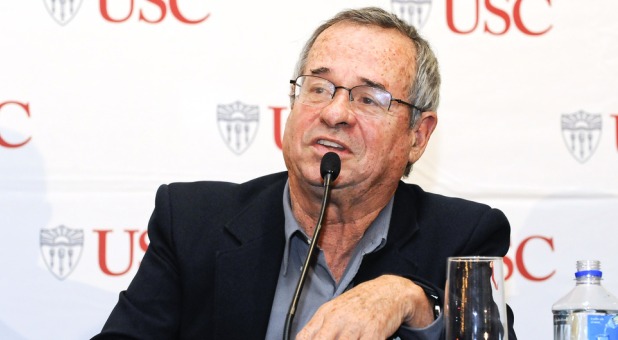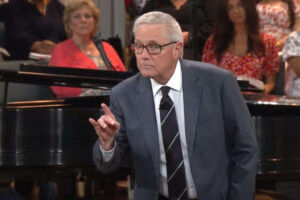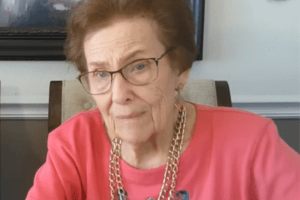What is behind Israel’s recent string of Nobel Prize winners?
It could be that Israelis have a practical way of thinking and strong strategies for solving difficult problems, says Arieh Warshel, who earlier this month was awarded the Nobel Prize in chemistry for his role in developing computer programs that simulate “large and complex chemical systems and reactions.”
An Israeli-American professor at the University of Southern California in Los Angeles, Warshel focused on enzymatic reactions within an all-Jewish team of three researchers sharing the prize. His fellow winners are colleagues Michael Levitt, a professor at the Stanford University School of Medicine who holds Israeli, British and American citizenships; and Martin Karplus, a professor at Harvard University and the University of Strasbourg who holds American and Austrian citizenships.
Warshel and Levitt join a long list of recent Israeli Nobel laureates, particularly in chemistry. Prof. Dan Shechtman of the Technion Israel Institute of Technology won the chemistry prize in 2011, and Ada E. Yonath of the Weizmann Institute of Science won in 2009.
In an exclusive interview with JNS.org, Warshel said that his main motivation as a scientist is “to be the first to solve how things are working.”
“If the motivation is to make money … those people won’t do original science,” Warshel said, calling this phenomenon “equally bad in Israel and in America.”
The announcement that Israeli citizens working abroad, like Warshel and Levitt, had won the Nobel Prize sparked a media debate in Israel on the country’s “brain drain,” where promising young professionals leave the Jewish state for better academic and industrial opportunities.
When it comes to governments funding science, Warshel believes investing in many smaller research projects is better than investing in “one flashy project.” The work of Warshel and his counterparts has long been supported by American federal science grants, but resources are still limited, and in both Israel and the U.S. it has become “less and less likely that the best idea will be funded,” he said.
During the 1960s, in the laboratory of Prof. Shneior Lifson at the Weizmann Institute of Science in Rehovot, Warshel and Levitt developed a computer model describing molecules classically, as composed of atoms, and predicted the structure of proteins under various conditions.
According to Warshel, atoms can be described as balls being bonded by springs. You can model a molecule by taking actual balls and connecting them with real springs. Then you can follow how the balls, representing atoms in a molecule, are connected, vibrate and move.
In a man-made model, the balls would soon fall apart because of gravity, whereas in molecules, the gravitational force is negligible. The alternative is to build a computer model that simulates the behavior of a real molecule. Assuming the atoms in the molecule behave according to Newton’s laws of physics, which are expressed by classical mechanics theory, and encoding the equations that describe Newtonian movement into the computer program, the behavior of the molecular system can be simulated.
One cannot, however, describe the breaking of a chemical bond with classical mechanics, as a ball and a spring. Warshel’s particular interest has been in modeling enzymatic reactions. Enzyme molecules are complex proteins that exist in most living organisms and engage in catalysis, which often involves the breaking of chemical bonds.
The Schrödinger equation, formulated in the 1920s by the Austrian physicist Erwin Schrödinger, describes how electrons are attracted to the nuclei of atoms. From this development evolved the field of quantum mechanics—an essentially different way of looking at a molecule, from the perspective of subatomic particles, like electrons, that exist inside it.
“There are not only springs of bonds to classical atoms, there are also the effects of the charges on classical atoms,” Warshel said.
Quantum mechanics computer modeling creates a map of an entire environment depicting where the electrons are likely to be and allowing researchers to predict what may happen next. But using quantum mechanics to calculate and model an entire environment of atoms that will interact with themselves and with the electrons becomes difficult for medium- or large-sized molecular systems. It would take years to model larger systems in this way, so Warshel and his fellow researchers developed improved computer modeling systems that look at the molecule both in terms of its classical particles (atoms) and its subatomic particles, like electrons.
“When you do it, you actually start to understand how enzymes work,” Warshel explained.
The Swedish Nobel Prize academy called the work by the three scientists “groundbreaking in that they managed to make Newton’s classical physics work side by side with the fundamentally different quantum physics. … Previously, chemists had to choose to use either/or.”
There are also practical, real-world implications for the research, both in the commercial world and in medicine, Warshel told JNS.org.
For example, laundry detergent often has an enzyme that helps it digest dirt from clothes. Hypothetically, the enzyme protein could digest too slowly or stop working when the temperature rises.
“Since this program allows you to understand exactly how [an] enzyme is working, you [could know how to] change some … amino acids in the enzyme and make it work better,” Warshel said.
There are also enzyme proteins in the body that can mutate and cause cancerous cell division, according to Warshel.
“If you understand how they work, you can try to find a way to make the broken enzyme not be so effective. In principle, you could look for a drug that when it is bound to the enzyme, it will make it stop working,” he said.
A similar scenario involves the HIV virus. When a new drug that is blocking an enzyme protein in the virus is developed, the virus changes sequence and stops binding well to the drug. But it is possible to look at the enzymes in the virus and analyze the mutations by which the virus tried to unbind and evade the drug, and the mutations that make the normal chemistry of the virus go on. Based on those two factors, researchers can suggest the next move of the virus. “It’s like playing chess,” Warshel said.
“In the cases where you want to understand how the virus or parts of it change in order to have resistance to drugs, knowing to model both the chemistry and the binding, and also knowing to model how stable the enzyme will be, is useful, and I believe would be more useful in the future,” he said.
According to statistics recently reported by Haaretz, Jews comprise 0.2 percent of the world population, yet 22 percent of all Nobel laureates have been Jewish. Warshel suggests that one factor behind this phenomenon is described in the book The Chosen Few: How Education Shaped Jewish History by Maristella Botticini and Zvi Eckstein, which stipulates that the survival of the Jewish faith—and by extension the survival of the Jewish people—has depended for centuries on the ability to read the Torah, enabling Jews to ultimately broaden their own education and develop practical skills. This strongly differentiated Jews from many other populations, which for centuries were generally illiterate.
In Warshel’s estimation, there is yet another theory behind Jewish scholarly and scientific success—one that is simpler and hits closer to home.
“There is the idea of the Jewish mother,” he quipped.
See an error in this article?
To contact us or to submit an article























